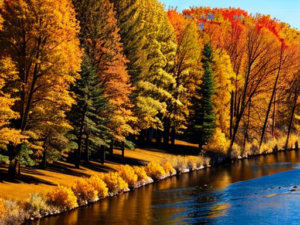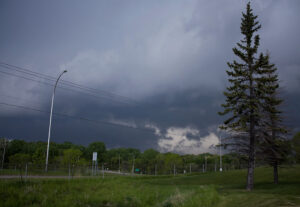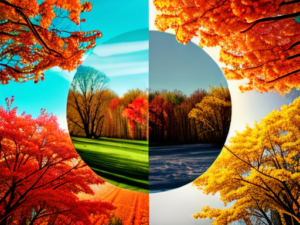By Bruce Carlson
Both Karen and I grew up in the Chicago area. We have lived in Wisconsin. We have gotten used to the highs of summer and the lows of winter. I enjoy being outside, whether cutting the grass or shoveling the snow.
Yet, as we thought about moving to the Metro East area of Illinois we talked to several folks familiar with the area. The idea of longer fall and springtime became very attractive. I don’t want to say I don’t like winter, but a little less isn’t bad either. Yes, the summers are warmer, but I don’t need a heavy coat to go outside. Fewer clothes are nice. Sorry, Brian, I’m not ready for North Carolina.
So here’s our research into the Metro East area of Illinois. We’re just on the east side of St. Louis. Oh, we’re still Cub fans😊.
Chicago vs St. Louis weather
Beneath the iconic arch of St. Louis and amidst the towering skyscrapers of Chicago, two cities with parallel urban vibes, a striking contrast in weather unfolds. While St. Louis basks in scorching heat, Chicagoans brace for chilling winds, embodying the diverse climates that shape these Midwestern metropolises. Explore the intriguing tale of weather contrast as we delve into the distinct atmospheric phenomena and seasonal characteristics that define these two vibrant cities.
St. Louis, known for its prominent position along the mighty Mississippi River, experiences a climate that’s unmistakably influenced by its location. Summers in St. Louis are characterized by relentless heat and humidity, leaving residents seeking solace under the shade of the city’s parks or flocking to the refreshing waters of local swimming pools. The mercury frequently climbs into the 90s, with heat indices soaring even higher, making it imperative for locals to stay hydrated and take precautions to beat the sweltering heat.
In contrast, the Windy City lives up to its moniker, with Chicagoans often battling gusty winds that sweep across Lake Michigan. The city’s proximity to the Great Lakes grants it a unique microclimate, leading to significant variations in weather patterns. Summers here are relatively cooler compared to St. Louis, with temperatures typically hovering in the comfortable 70s to 80s. However, occasional heatwaves can still send temperatures soaring, testing the resilience of Chicago’s dwellers.
The fall
As autumn casts its colorful hues, St. Louis welcomes milder temperatures, offering respite from the scorching summer heat. The transition brings pleasant days with temperatures ranging from the 60s to the 70s, perfect for exploring the city’s picturesque parks or enjoying outdoor activities. In the heart of St. Louis, Forest Park’s trails become adorned with fallen leaves, painting a vibrant tapestry against the backdrop of the city’s skyline.
Meanwhile, Chicago experiences the dramatic shift towards fall with a crisp bite in the air and the enchanting aroma of hot cider. The Windy City’s autumn paints a picture-perfect scene, as leaves transform into vibrant red, orange, and gold shades. Temperatures start to drop, dipping into the 50s and 60s, setting the stage for cozy evenings and the anticipation of winter’s arrival.

Speaking of winter, St. Louis boasts a relatively mild one compared to its northern neighbor. Snowfall is limited, and temperatures rarely plunge to bone-chilling levels. However, occasional cold snaps and freezing rain can still make their presence felt, requiring St. Louis residents to bundle up and exercise caution during icy conditions. Meanwhile, Chicago transforms into a winter wonderland, often blanketed in thick snow. The biting winds off Lake Michigan create a chill that seeps into the bones, prompting locals to don multiple layers and embrace the art of winter layering.
As spring breathes life back into the landscape, St. Louis witnesses a reawakening of nature’s beauty. Blooming cherry blossoms, vibrant tulips, and fragrant magnolias signal the end of winter’s slumber. Temperatures gradually climb, reaching the 60s to 70s, drawing residents outdoors to enjoy the mild and pleasant weather.
Meanwhile, in Chicago, the arrival of spring is often a battle between winter’s reluctant retreat and the eager embrace of warmth. Fluctuating temperatures bring a mix of rain showers, bursts of sunshine, and occasional lingering snowflakes. The city’s residents eagerly shed their heavy coats in favor of lighter jackets, optimistically embracing the promise of a brighter season ahead.
Divergent weather patterns
The divergent weather patterns between St. Louis and Chicago offer a captivating contrast that shapes the experiences of their inhabitants. From scorching summers to gusty winters, each city paints its own atmospheric portrait, beckoning locals and visitors alike to immerse themselves in the unique climatic tapestry of the Midwest.
As the seasons unfold and the weather evolves, St. Louis and Chicago stand as a testament to the ever-changing nature of the elements, providing a captivating story that continues to unfold year after year. So, whether you find yourself seeking the warmth of the Mississippi or the windswept shores of Lake Michigan, rest assured that these vibrant cities have weather tales to tell that are as diverse as the communities that call them home.
While the divergent weather patterns between St. Louis and Chicago showcase their unique climatic characteristics, it is important to note that both cities share some common weather-related challenges. events such as thunderstorms and tornadoes can impact both regions, albeit with varying frequencies and intensities.

In St. Louis, the arrival of spring and summer often brings with it the possibility of severe thunderstorms. These storms can be accompanied by powerful winds, torrential downpours, and intense lightning displays. Residents remain vigilant and rely on local weather alerts to stay informed and prepared for any potential risks.
Likewise, Chicagoans are no strangers to severe weather. The convergence of warm, moist air from the south and cooler air from the north can create an environment conducive to thunderstorm development. In addition, the city occasionally falls within the path of strong weather systems originating from the Great Plains, which can lead to severe thunderstorms and even tornadoes. Timely access to weather forecasts and emergency preparedness measures is crucial for residents in these situations.
Shared weather
Another shared weather concern for both cities is the potential for winter storms. While St. Louis experiences milder winters compared to its northern counterpart, occasional winter storms can bring significant snowfall and icy conditions, leading to travel disruptions and safety hazards. In Chicago, winter storms often bring a combination of heavy snowfall, strong winds, and bitter cold, resulting in blizzard-like conditions and challenging commuting conditions.
Despite their differing climates, St. Louis and Chicago share a common bond in their resilience and adaptability to the ever-changing weather patterns. Whether it’s enjoying a summer barbecue along the banks of the Mississippi or ice skating in Millennium Park during a snowy winter, the residents of these vibrant cities have learned to embrace and adapt to the unique weather experiences that shape their lives.
As we explore the contrasting weather between St. Louis and Chicago, it becomes evident that the Midwest is a region of weather extremes, where scorching heat, biting winds, colorful autumns, and snowy winters coexist. Understanding and appreciating the nuances of these weather patterns not only help us plan our daily activities but also fosters a deeper connection to the environment and the communities we inhabit.
What do you think?
So, next time you find yourself strolling through Forest Park in St. Louis or gazing at the iconic Chicago skyline, take a moment to appreciate the intricate dance of weather that shapes these remarkable cities. From soaring temperatures to blustery winds, the weather in St. Louis and Chicago adds an extra dimension to the vibrant tapestry of life in the heartland of America.
I think fall is the time I’m most looking forward to. Hopefully, we will have glorious colors along the rivers of the area. Spring isn’t too bad either. When we have come down to visit our son and his family it’s always warmer and less overcast. I think we will be able to tolerate it.

The end
We hope you are enjoying these articles and are willing to continue to follow along as we move through the process of selling our house, buying a new house (to become our home), and the adventures of learning about life in southern Illinois, Bruce & Karen.

